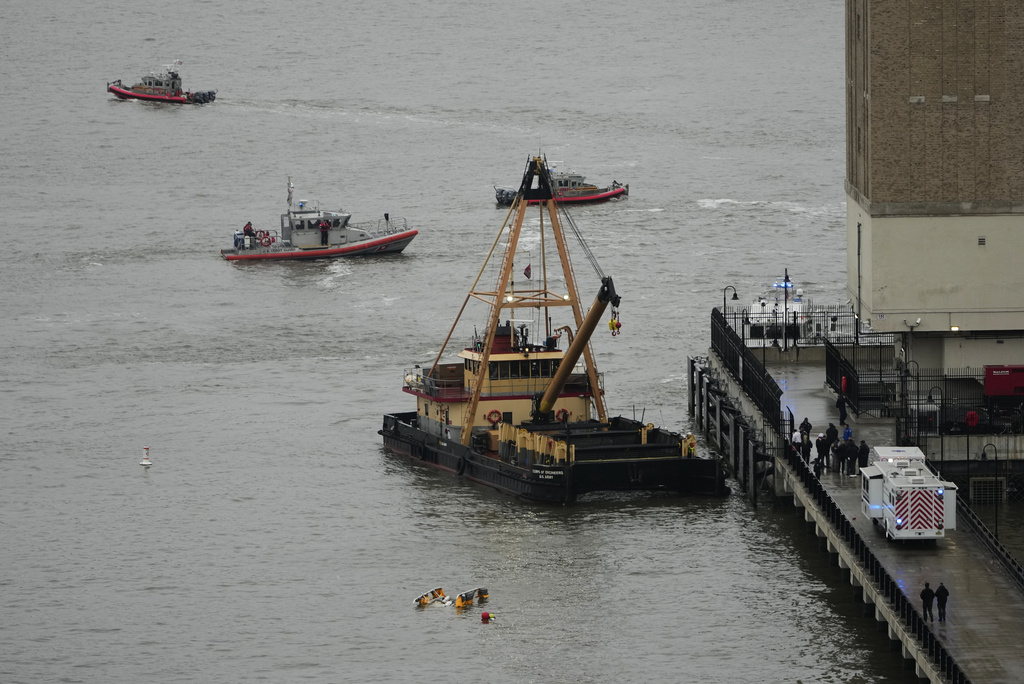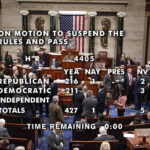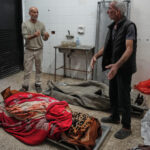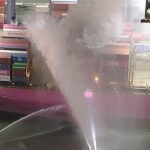Army Chopper, Jet Collision Probed by NTSB in Hearings/ Newslooks/ WASHINGTON/ J. Mansour/ Morning Edition/ The NTSB concluded its final day of hearings on the January midair collision between an Army Black Hawk helicopter and an American Airlines jet that killed 67 people. Testimony revealed concerns over helicopter altitude violations, FAA oversight, and gaps in pilot communication. A final report is expected next year, as officials push for systemic airspace reforms.

Army-Jet Midair Collision: Quick Looks
- Final day of NTSB hearings held Friday on January’s fatal D.C.-area crash
- 67 people were killed when a Black Hawk collided with an American Airlines jet
- FAA faulted for ignoring long-standing airspace warnings and overreliance on visual separation
- Black Hawk was flying above its prescribed altitude, according to investigators
- Helicopter’s crew failed to hear crucial instructions moments before the crash
- Military pilots possibly lacked familiarity with Washington D.C.’s complex airspace
- Key tracking systems may have been disabled, common in military aircraft
- Civilian pilots expressed longstanding discomfort with Army and Air Force helicopter operations
- NTSB Chair urges the FAA to ‘do better’ after evidence of past warnings ignored
- Final crash report is due in 2026, with safety reforms likely on the way
Deep Look: Investigators Conclude Public Hearings Into Fatal Army Helicopter and Jet Collision
While a final cause has yet to be determined, emerging testimony paints a troubling picture of systemic failures, from FAA oversight lapses to military aviation protocols, and miscommunication in the final moments before the crash.
High-Altitude Trouble in a Crowded Sky
Key findings centered around the Black Hawk’s altitude, which exceeded the 200-foot ceiling set for that flight path near Ronald Reagan National Airport. Investigators said flight data showed the helicopter was flying 80 to 100 feet higher than the barometric altimeter indicated — a dangerous margin in a tightly controlled and heavily trafficked air corridor.
“This was an accident with virtually no room for error,” said NTSB Chair Jennifer Homendy, who pointed to decades-old warnings the FAA allegedly ignored.
The FAA’s dependence on visual separation, especially among military aircraft flying with night vision goggles, was highlighted repeatedly. Controllers and pilots alike were reportedly accustomed to managing the crowded D.C. airspace using visual rather than instrument-based methods, despite known difficulties identifying other aircraft at night.
Civilian Pilots Voice Safety Fears
In Thursday’s session, Rick Dressler, a former Army pilot and current medevac operator, voiced deep concern about military helicopter traffic in D.C. airspace. Speaking for a group of civilian helicopter pilots, Dressler said operations around Reagan are fraught with risk when military pilots unfamiliar with local airspace enter high-density zones.
“We are all very uncomfortable when those two units are operating,” he testified, referring to the Army and Air Force. “They don’t get the seasoning here to really understand how the airspace works.”
Dressler also criticized the disbandment of regular aviation coordination meetings involving military and civilian pilots in the region. Army officials present at the hearing invited him to bring his concerns directly to the Pentagon.
Final Moments Before the Collision
Testimony revealed the Black Hawk’s crew was in contact with Reagan’s control tower, but didn’t fully hear a key instruction to “pass behind” the approaching jet — a miscommunication caused when the helicopter’s microphone key was inadvertently pressed.
An instructor pilot aboard the helicopter made a last-minute request: “Kinda come left for me ma’am.” The pilot responded, “Sure,” but it remains unclear whether the maneuver was initiated in time.
Aviation expert John Cox, a retired commercial pilot, emphasized how little room for error exists over the Potomac River corridor, where helicopters and planes must maintain precise spacing. “The separation has always been tight,” Cox said, “but manageable — until now.”
Victims and Fallout
The American Airlines flight had arrived from Wichita, Kansas. Among the victims were elite figure skaters, their families and coaches, as well as four union steamfitters from the Washington area.
The collision marked the beginning of a string of accidents and near-misses across the U.S. aviation system this year. Despite improvements in safety over the past two decades, the January crash has reignited concerns about the growing complexity of U.S. airspace and the readiness of both military and civilian air traffic systems.
FAA, Pentagon Under Pressure
Chair Homendy urged the Federal Aviation Administration to improve oversight, particularly regarding helicopter operations in urban areas and enforcement of existing airspace rules. The FAA and Department of Defense have so far offered limited responses, with the Army declining immediate comment on Dressler’s testimony.
The Air Force did not respond to media inquiries regarding their operational protocols in the area.
A Path Forward
With the final report due next year, safety officials, lawmakers, and aviation stakeholders are expected to push for:
- Stricter enforcement of altitude and routing for military aircraft
- Reinstatement of coordination meetings among all airspace operators
- Reevaluation of reliance on visual separation in urban airspaces
- Mandatory use of aircraft locator systems, even by military units







